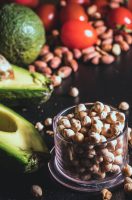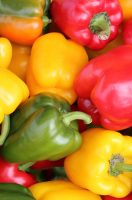What is Diabetes?
Diabetes is a chronic disorder of carbohydrate, fat, and protein metabolism characterized by fasting elevated glucose (blood sugar) levels. Diabetes carries a significantly increased risk of stroke, heart and kidney disease, retinopathy and loss of nerve function.
There are two classifications of Diabetes:
Type 1, or insulin dependent diabetes mellitus (IDDM), is associated with complete destruction of the beta cells in the pancreas, which manufacture the hormone insulin. (M.Murray, 2005) Less than 10% of the diabetic population has Type 1 diabetes, which is usually diagnosed in early childhood. (Bauman 2012) Type 1 diabetes is a serious condition, which requires lifelong insulin injections to manage blood sugar. Classic symptoms of type 1 diabetes are excessive thirst, frequent urination, and excessive appetite.
Type 2, or non- insulin dependent diabetes mellitus (NIDDM), usually effects adults, (M.Murray 2005) however, in recent years there has been an increase of childhood diagnoses. Individuals with type 2 diabetes have elevated insulin levels due to a loss of sensitivity to insulin by cells of the body, also know as insulin resistance. Symptoms of type 2 diabetes such as fatigue, blurred vision, periodontal disease, poor wound healing and frequent infections are milder and frequently overlooked. (M.Murray, 2005) Obesity is a major contributing factor of Type 2 diabetes and according to the American Diabetes Association (ADA), diabetes mellitus is at epidemic proportions in the United States. Uncontrolled (NIDDM) pose a variety of health risks such as blindness, cardiovascular disease, kidney failure, peripheral neuropathies, and the possibility of various cancers. In conjunction with diet, exercise and lifestyle change, most individuals with type 2 diabetes can control their insulin levels without the need for pharmaceuticals (Bauman 2012)
3 Key Nutrients Diabetes sufferers need:
- Vitamin B6
- Vitamin C
- Manganese
Vitamin B6 (Pyridoxine) 80-90 percent of the total body pool of pyridoxine is found in muscle tissue. Vitamin B6 is involved in approximately 100 enzymatic reactions in the human body. One reaction called decarboxylation, is important to the conversion of tryptophan to serotonin. Vitamin B6 also plays a role in the production of glucose through gluconeogenesis. The therapeutic range for B6 is considered to be from 30 to 500mg/day. (Liver enzymes should be monitored if doses of 250 to 500mg are taken on a long-term basis.)
Food Sources of Vitamin B6:
(Milligrams per 100 grams (3 1/2 oz) edible portion)
Brewer’s yeast = 2.50
Sunflower seeds = 1.25
Toasted wheat germ = 1.15
Tuna = .90
Lentils = .60
Brown rice = .55
Bananas = .51
Avocado = .42
Egg yolks = .30
Vitamin C (Ascorbic) exists in three forms: ascorbic acid, semidehydroascorbate, and dehydroascorbate. Humans are unable to synthesize vitamin C from glucose due to their lack of one vital enzyme. Therefore they must ingest vitamin C, which is absorbed by an active transporter in the intestines. (CNAFA, 2004) Doses ranging from 200-2000 mg /day, reduce accumulation of sorbitol in red blood cells of diabetics, by inhibiting aldose reductase, the enzyme that converts glucose to sorbitol.
Food Sources of Vitamin C:
(Milligrams per 100 grams (3 1/2 oz) edible portion)
Guava = 242
Kale = 186
Broccoli = 113
Spinach = 51
Lemon juice = 50
Turnips = 36
Oysters = 30
Green peas= 27
Raspberries = 25
Manganese is important in a variety of metabolic functions and helps with carbohydrate metabolism, bone development, protein digestion, and collagen formation, fatty acid and protein synthesis. (CNAFA, 2004) Diabetics have only half the manganese of normal persons. Daily dose for diabetics is 3-5 mg. (CHNM, 2008) Manganese competes for absorption with iron, so iron deficiency may result from long-term manganese supplementation. (CNAFA, 2004) (bitelog.com)
Food Sources of Manganese:
(Milligrams per 100 grams (3 1/2 oz) edible portion)
Pecans = 3.5
Buckwheat = 1.3
Raisins = 0.5
Carrots = 0.16
Swiss cheese = 0.13
Coconut = 0.04
Pear = 0.03
Pork chop = 0.03
Scallops = 0.01
Additional Foods, Herbs and Supplements for Diabetes Mellitus
Bilberry otherwise know as European blueberry, is a perennial shrub that grows in the forests of Europe. Bilberry flavinoids (anthocyanosides) have been shown to increase intracellular vitamin C levels. Bilberry extract has been prescribed for diabetic retinopathy due to the positive effects it has on blood vessels of the eye and retina, especially in the macular area. The standard dose is 8 to 160 mg three times daily.
Chromium supplementing with chromium may lower insulin levels, decrease fasting blood glucose levels and improve glucose tolerance in individuals with NIDDM. The recommended dietary allowance has not been established for chromium, at least 200 mcg daily in the form of chromium polynicotinate, chromium picolinate, or chromium enriched yeast, appears necessary for sugar regulation.
Vitamin E not only improves insulin action in diabetics, but it may also help prevent long-term complication of diabetes. Vitamin E supplements may reduce oxidative stress and improve glucose control. Therapeutic dose for vitamin E is 800to-1,200 IU daily.
Potassium Insulin administration among diabetics induces potassium loss. Supplementation with potassium improves responsiveness, insulin sensitivity and secretion. A safe intake of potassium is estimated to be 1.9g to 5.6g daily. However, diabetic individuals do not handle potassium in a normal way and should be properly evaluated by their health care practitioner.
Zinc involves virtually all aspects of insulin metabolism. Diabetics excrete excessive amounts of zinc through their urine, therefore supplementation of at least 30mg daily is suggested.
Exercise physically fit diabetics gain a variety of benefits from regular exercise: improved chromium metabolism, improved glucose tolerance, and enhanced insulin sensitivity. Exercise is recommended for both IDDM and NIDDM. However, it is best to consult with a health care practitioner before beginning a regular fitness routine.
Resources:
Encyclopedia of Natural Medicine 2nd Edition. M.Murray, N.D and J. Pizzorno, N.D, 1998.
The Encyclopedia of Healing Foods M. Murray N.D. 2005
Clinical Nutrition A Functional Approach 2nd Edition 2004
Therapeutic Nutrition Part One Ed Bauman, M.Ed., Ph.D. & Jodi Friedlander, N.C
The Clinicians’ Handbook of Natural Medicine Second Edition 2008



